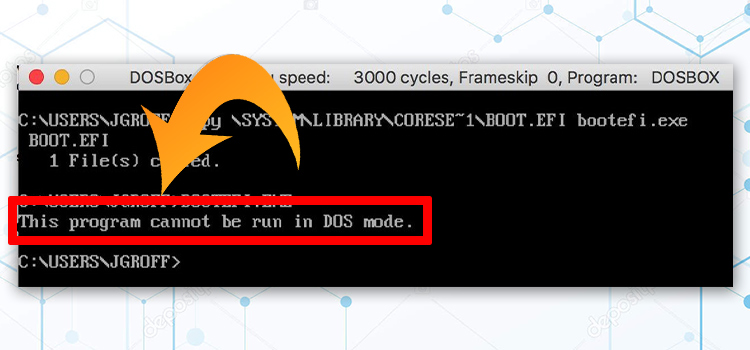What is Software Supply Chain Security and Why Does It Matter?
From SBOM – Software Bill of Materials – to Open source code security — our software supply chains demand more and more of us. More tech, more supervision, more regulated input. But why is that? Why does our software development space need such a strict chain of custody? Because data breaches are at an all-time high. 1 in 5 attacks our software’s supply chain. They have increased by more than 82% over the last 2 two years. In this article, we’re going to dive into the world of software supply chain security. Giving you an idea of what software supply chain security is? As well as answering some of the most searched questions on the internet regarding software supply chain security tools.

What is Software Supply Chain Security?
Security is not just about protecting the confidentiality and integrity of data, but also its availability.
Software supply chain security ensures that software is not compromised at any stage of the development process. This includes before it is written, during the coding process, during testing, and after it has been released to customers.
Software supply chain security helps organizations get a better handle on their projects and products — Software supply chain security tools detect, ID, audit, and mitigate risk associated with your codebase and digital artifacts. These types of tools take apart your codebase and pinpoint problems associated with it. Including software issues via third-party functions like source library, open-source codes, commercial software vendors, etc.
Software Supply Chain Security — Frequently Asked Question
Let’s take a look at some of the most searched questions on the net when it comes to the topic of Software supply chain security.
How do I ensure Software supply chain security?
To ensure software supply chain security, there are several steps that an organization should take. These include:
- Securing access to source code repositories.
- Ensuring that only authorized users have access to all tools required for development and testing.
- Implementing checks for malware in every step of the development process.
Why are Software supply chains vulnerable?
Software supply chains are vulnerable because of the complexity of the different software and hardware components that are used to create them.
The three main reasons for their vulnerabilities are:
- Today, a software’s codebase is nothing more than a chimera of codes and apps. There is a high degree of dependence on external suppliers — not only commercial software vendors but free licensed open-source codes. Codes and products that sometimes lack testing and are not certified.
- They are constantly being targeted by attackers that want in inject malware into the code database. Currently, it is standard practice by black hat hackers to introduce backdoors, whenever possible, into the software before its launch.
- Finally, software supply chains are vulnerable because they can be subject to intellectual property violations. You’re using software, software whose license might have been revoked, or that you are in breach of. This might expose your company to liability issues.
Why are software supply chain attacks trending?
Software supply chain attacks have been a trending topic in the news recently.
Software supply chain attacks are on the rise because of several reasons.
- Software companies are not taking enough precautions to protect their code which leads to hackers being able to exploit it for malicious purposes.
- Software vendors are not always truthful about where their code comes from and how it has been used before it reaches their customers. This makes it difficult for customers to know whether or not they should trust the product they’re purchasing because they don’t know what’s been done with it before.
- It’s a very lucrative industry — hacking. The average attack can cost a company 4 million dollars. Of that whopping amount over 20% is funneled to hackers, in most cases to pay ransom for a hijacked system. That’s about $800k per breach that criminals are making. From a purely objective POV, hacking is an incredibly lucrative career. One that in many cases has little to no consequences, since it’s incredibly hard to track and prosecute hackers. There’s very little risk and a lot of gain to the practice. This reason alone has made, to some, a rather interesting career choice.
What can be done to prevent software supply chain attacks?
One solution is that companies need to agree on a licensing scheme to determine who is allowed to use the software and can be trusted with it, along with what they are allowed to do with it.
Another solution would be for companies to develop software in-house and stop depending on open-source codes.
And finally, a third solution is to install software supply chain security tools and automation features that will grant them more control and visibility over their software development activities.
Why are software supply chain attacks a threat?
Supply chain attacks may potentially harm users of the product as well as the company., If the company launches tainted software to the upstream supplier of a product it may be liable in the eyes of the law. They will also have to remove it from their inventory and create patches and fixes which will mean the company incurs unwanted costs.
The other way is by altering the source code of an open-source software program that the manufacturer sells. This might make companies reticent in employing external coding. For some companies, this would require significant investments to develop their software — an investment that will limit their software development activities.
What are the elements of software supply chain security?
Hackers, and the like, hunt insecure networks, servers, infrastructure, and unsafe coding practices — they aim to find vulnerabilities and weak points that will allow them a way to sneak into your platforms. In many cases, it’s through external vendors and open-source products.
This allows them a backdoor to change source codes, hide malware and build traps. Software supply chain security tools look for these types of vulnerabilities.
Types of software supply chain security attacks
- Compromised software building tools.
- Stolen code signing certificates.
- Malicious apps mirror the development company’s identity.
- Compromised specialized code shipped into firmware components and hardware.
- Malware pre-installed into devices.
Using Top Software Supply Chain Security Tools
By employing automation tools and strong software supply chain security apps companies can protect against attacks. They can deploy strong code integrity policies, as well as endpoint detection. These types of tools can apply patches, give you a warning, and create a much more dynamic software supply chain.
Subscribe to our newsletter
& plug into
the world of technology





